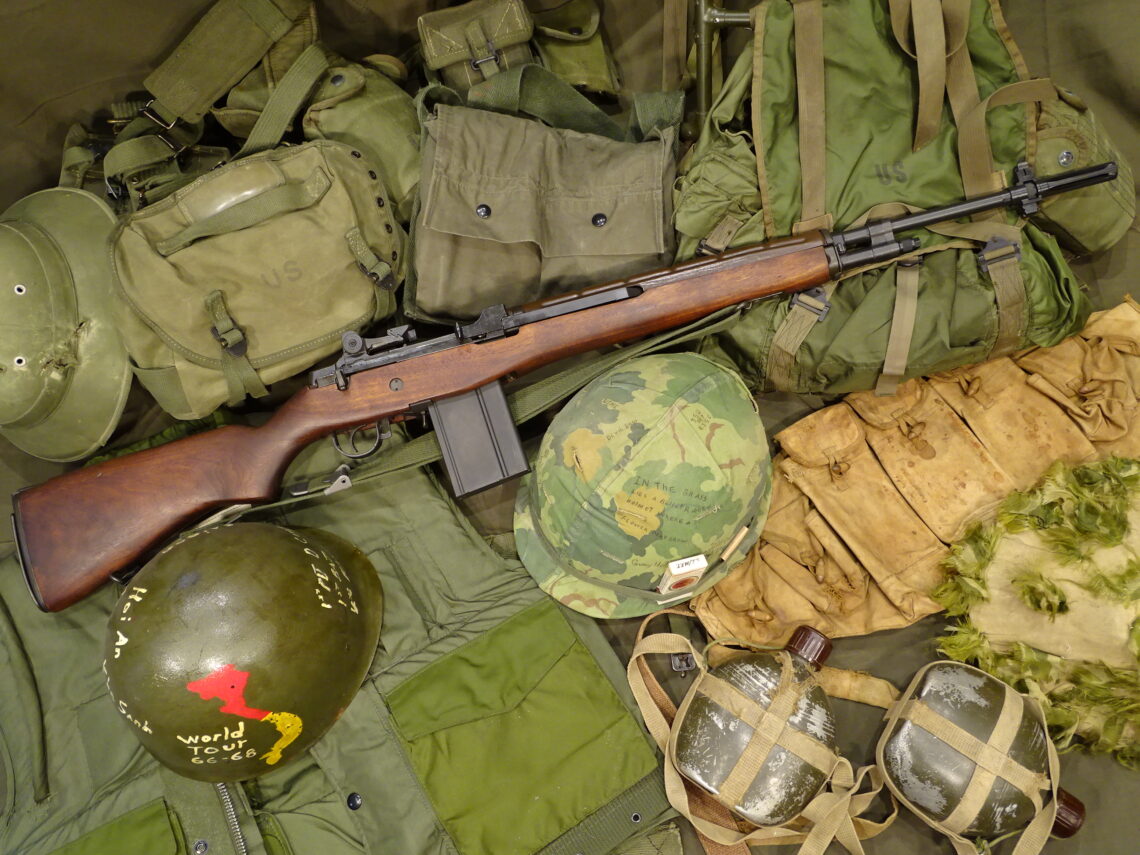
My M14 (Part 2 of 3)
Martial Arms collectors have a fertile field of historic artifacts to pursue. Martial arms are a unique collectable that allows a person to own an artifact “that was there”. Not many collectors have the means to own a F4U Corsair, No private citizen owns a battleship, but a martial arm is well within the means of a dedicated collector. I own a Charleville Musket that might have been at Yorktown and used in storming Redoubt #10. I have a Civil War Merrill Carbine identified to a trooper in the 8th Indiana Cavalry. My M1 Garand might have been at Elsenborn ridge during the Bulge when we stopped Stepp Detrich’s Panzers cold.
Unfortunately for collectors, martial arms collectors are saddled with dealing with a number of laws that restrict commonly used weapons from private citizens. The 1934 National Firearms Act, 1968 Gun Control Act, and 1986 Rangel Amendment to the McClure-Volkmer Act all restricted to varying degrees auto or select fire weapons. Contrary to common belief, they are technically perfectly legal and always have been, but the bureaucratic hassle and expense of owning them precludes all but the most dedicated and wealthy citizen from owning them.
At the end of the Second World War U.S. Ordnance developed a new rifle to replace the M1 Garand. It used an improved gas and magazine feed system along with a new cartridge. It was also select fire, i.e. capable of full or semi-auto use. This was, of course, the M14 rifle. As a semi-auto, it was an excellent successor to the M1. As an automatic rifle, it was a train wreck, the 7.62 NATO cartridge had too much recoil for such a light shoulder arm. It was also saddled with massive production and quality control issues. These eventually resulted in the closure of the national armory at Springfield, MA and the cancellation of the contracts of three private manufacturers.
Nevertheless the M14 was a significant U.S. martial arm during the Vietnam War, and dominated High Power Rifle competition until the mid 1990s. As a collector or as a shooter, you should own a M14. Unfortunately, only few dozen real M14s are in circulation. Most of us have settled for a replica of some sort, frequently the Springfield Armory Inc. M1A or similar that looks and handles like a M14 but lacks the lug on the receiver for the full auto parts and therefore avoids the legalities of the NFA.
In other blog installments I have written of my newly rekindled enthusiasm for High Power competition. Many shooters build M14 type rifles for this type of shooting, often with a heavy barrel and stock. Not mine. I spent the better part of a decade searching for U.S.G.I. parts to make the rifle as close to a Vietnam era general issue rifle as possible. It wasn’t easy, by the 1990s the supply of original surplus parts was drying up, and the market was flooded with commercial parts often of questionable quality. My M14 is built on a Fulton Armory receiver by my friend and surf fishing mentor Clint McKee. She is as close as I could get to that M14 a Vietnam Marine held in that rice paddy in 1965. She’s handy, lighter than you would expect and well balanced between your hands. With 20 rounds of 7.62 NATO, she’s not playing games. Altogether a fine example of a weapon beloved by generations of American rifleman before AR carbines came to rule the world.
By Michael P. Popernack
If you would like to learn more about the M14 rifle, check out our books “The NEW M14 Complete Owner’s Guide” and “The M14 Complete Assembly Guide” available on our website. We also offer “The M14 Owners and Assembly Bundle“ at a reduced price for the pair.



